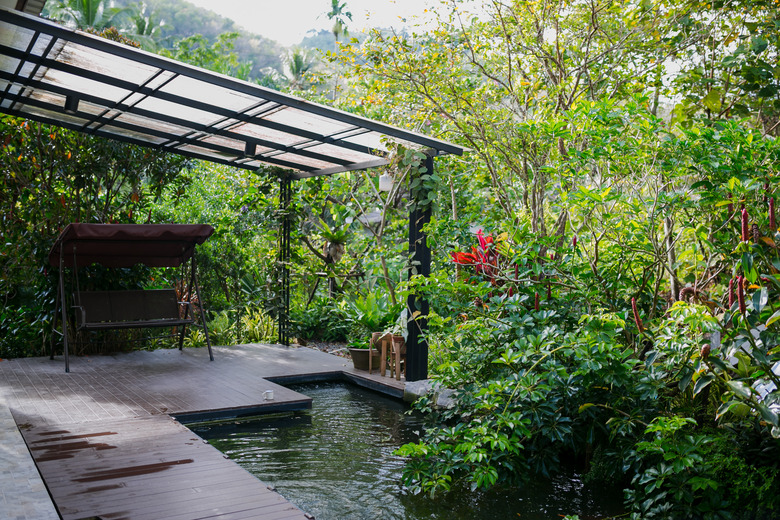How To Get Rid Of Tadpoles In A Garden Pond
We may receive a commission on purchases made from links.
Your garden pond was intended to be a part of the natural living environment. But when uninvited tadpoles start taking over, it can disrupt the balance of the ecosystem. Tadpoles compete with fish for food in the pond, consume pond vegetation, and might encourage bird and snake predators to stalk the pond area. There are several ways to reduce and eliminate tadpoles from your pond without disturbing the delicate balance of the natural environment.
Tip
Some tadpoles and frogs are protected. Always check with the appropriate department or regulatory agency in your state before removing tadpoles on your own. Wildlife for All makes it easy to identify and contact your state's environmental regulatory and advisory bodies. Simply click your state on the map to be directed to these agencies.
Keep the Pond Clean
Keep the Pond Clean
A pond or swimming pool that's overgrown with algae creates a feast for new tadpoles and encourages frogs to lay their eggs in your garden pond. Removing algae eliminates the food source for young tadpoles, preventing them from developing into frogs.
Use a pond vacuum to get to algae at the bottom of the pond, and consider adding fish that will assist in keeping algae to a minimum.
Use a Net
Use a Net
A fine mesh net typically used for skimming debris can be used to capture tadpoles. This method is best used in garden ponds that aren't too expansive and for infestations that aren't too prolific.
Skim the garden pond with the net and place captured tadpoles in a bucket of water. Once captured, these tadpoles can be given to people with pet snakes or turtles that could use the extra food. Although it may be tempting to transplant the tadpoles to a nearby body of water away from your garden pond, this goes against general advice. Moving tadpoles to a different water source can cause diseases and invasive plants to travel with them, upsetting a balanced ecosystem in another body of water.
Add a Natural Predator
Add a Natural Predator
Many predators could cull the tadpole population in your pond naturally, but you likely don't want a creature that threatens your tranquility, like a water snake, taking over the pond. Instead, opt for a tadpole predator that will fit into the existing ecosystem without disturbing your peace, like larger goldfish and koi.
Once these natural predators reduce the tadpole population, they will likely also discourage frogs from laying eggs in an inhospitable environment. Before bringing any new animal into your garden pond, research to make sure that the vegetation and aquatic environment can support the new residents.
Prevent Tadpole Infestations
Prevent Tadpole Infestations
After you've cleared the tadpoles, you'll probably want to prevent your garden pond from becoming a hatchery again. You can do this by using frog repellents and by making the garden pond less attractive to frogs and toads.
Consider installing a fountain that creates some movement in the pond water. Frogs prefer to lay eggs in still water. Adding physical barriers, like a small stone wall around the perimeter, can also keep frogs and toads from hopping into the garden pond.
